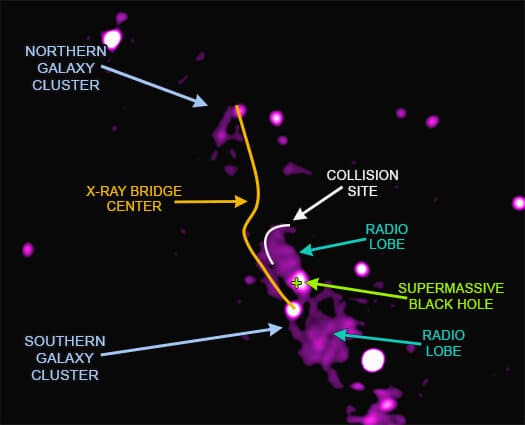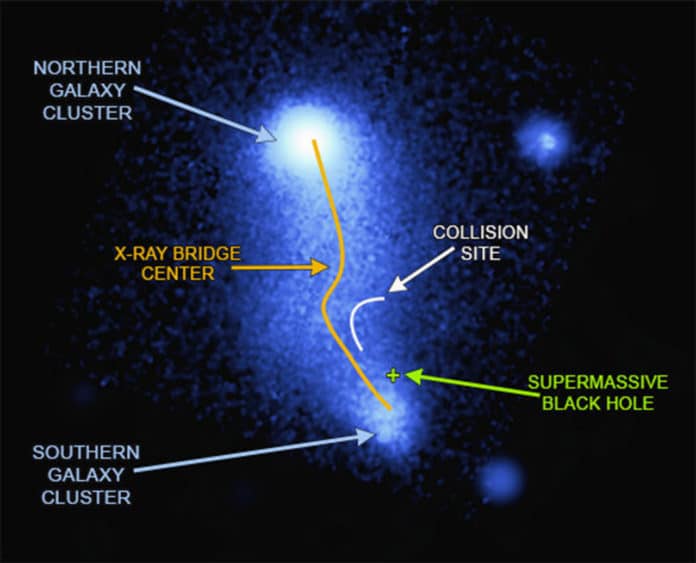Abell 2384 is a unique system that is located 1.2 billion light-years from Earth. It has a dense, hot X-ray filament or bridge connecting the two unequal mass clusters A2384(N) and A2384(S). These two clusters have collided before several hundred million years. The collision between two emitted a huge amount of hot gas from each galaxy cluster towards each other. This formed an unusual bridge between two.
Now, that bridge is being pulverized by particles driven away from a supermassive black hole.
A newly released composite image of X-rays from NASA‘s Chandra X-ray Observatory and ESA’s XMM-Newton (blue), as well as the Giant Metrewave Radio Telescope in India (red), shows a superheated gas bridge in Abell 2384. The image reveals the effects of a jet shooting away from a supermassive black hole in the center of a galaxy in one of the clusters.
The view has shown the powerful jet that is believed to bend the shape of the gas bridge. Interestingly, the jet ha extended the bridge over 3 million light-years. It has a mass of about 6 trillion Suns.
A labeled image traces the shape of the bridge, marks the position of the supermassive black hole, and shows where the stream is pushing the hot gas in the bridge sideways at the collision site. The lobe of radio emission denoting the end of each jet.

At the collision site, there is a evidence for a shock front, which can keep the gas hot and preventing it from cooling to form new stars.
The image also shows entending radio emission for about 1.2 million light-years from the black hole to the north and about 1.7 million light-years to the south. The northern radio emission appears faint than that of the southern one. The difference occurs because of radio emission to the north being slowed down by the jet’s impact with the hot gas in the bridge.
Abell 2384 offers a rare case of such an interaction occurring in the outer region of a cluster. It is also unusual that the supermassive black hole driving the jet is not in the largest galaxy located in the center of the cluster.
Using computer simulations, astronomers have shown that after a collision between two galaxy clusters, they oscillate like a pendulum and pass through each other several times before merging to form a larger cluster. Based on these simulations, astronomers think that the two clusters in Abell 2384 will eventually merge.
Journal Reference:
- V Parekh, A rare case of FR I interaction with a hot X-ray bridge in the A2384 galaxy cluster. DOI: 10.1093/mnras/stz3067
